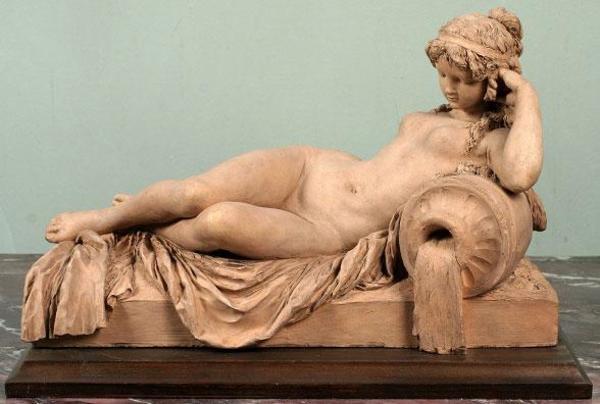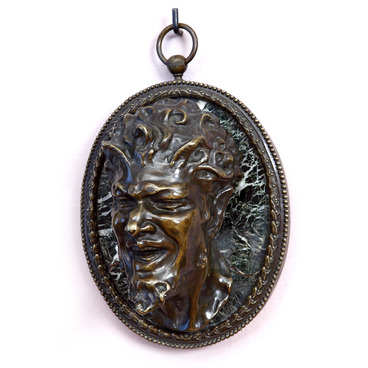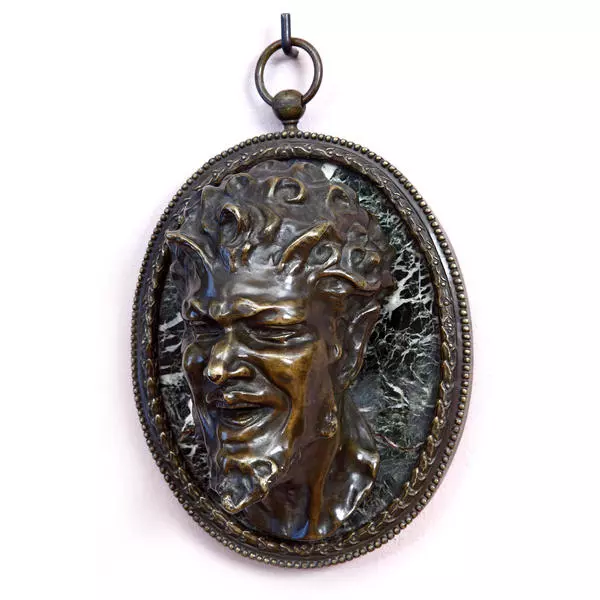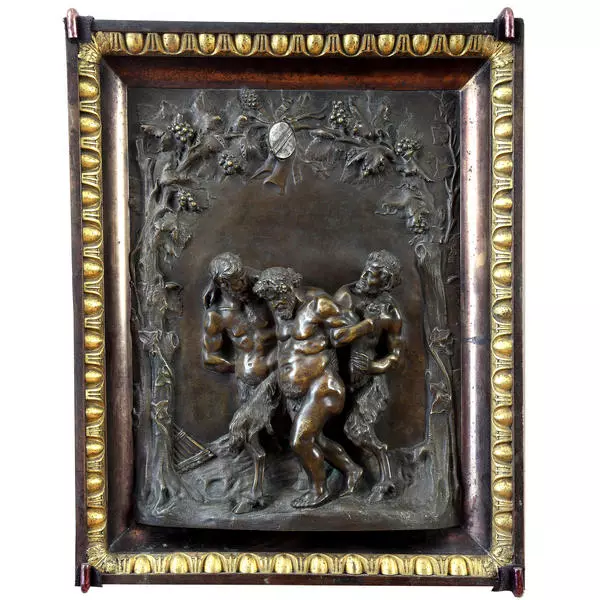The high relief with the head of a nymph was created by Claude-François Michel, known under the pseudonym of Clodion. The image was cast in bronze in the 19th century. It is decorated with thin plates of marble – the stone was glued on top of an already finished base. Researches have not determined the exact type of the marble. It is also unknown who exactly was engaged in the casting itself. Often, artists executed sculptures of wax or gypsum themselves, and later bronze artisans cast them in bronze.
1 / 2
Head of a Nymp
Время создания
late 16th century
Размер
62.0х165.7х58.5 cm
Техника
Wood (walnut), carving, gilding
Коллекция
Выставка
1
Открыть в приложении#1
Claude-François Michel, Clodion
Head of a Nymph
#2
#3
This composition in the Yaroslavl Museum of Fine Arts has a pair – the head of a satyr. The works are decorated with marble of the same colour and seem to look at each other: the nymph has turned slightly to the right, and the satyr to the left. In ancient Greek mythology, satyrs ran with the nymphs through the forests or pursued them with their passions.
Nymphs were considered both living and divine creatures – they were the patronesses of forests, mountains, lakes, seas. Some nymphs were mortal: when a part of nature perished, its soul-nymph also disappeared with it. For example, naiads died with a dried-up pond, and dryads – with their tree. Artists depicted nymphs in the form of beautiful semi-nude girls.
#4
Clodion also presented nymphs as beautiful women. One of his most famous sculptures is the river nymph in the A.S. Pushkin State Museum of Fine Arts.
#5
Clodion, Claude-François Michel. River Nymph. After 1780. The Pushkin Museum.
#6
The composition of terracotta – fired clay – was constantly copied both during the artist’s life and after his death.
#7
Clodion lived for about 10 years in Italy and was largely inspired by classical art. His characters are often endowed with human features, and are anatomically accurate: muscles, joints and body proportions look like real ones. The nymph from this bronze high relief is also similar in features to a human. She stares vividly at the satyr and smiles joyfully.
#9
The art critic Svetlana Morozova wrote that Clodion’s fauns and satyrs are a little coarsish, but always ‘make a plastic contrast to the graceful naked nymphs and bacchantes’. The sculptor usually made girls’ faces pretty, “with a small, slightly upturned nose and a soft chin”. His nymphs smile innocently, their mouths slightly open. In such a way the artist emphasized the “youth and childness” of the creatures.
#8
Clodion’s bronze high reliefs adorned rich interiors. Already in Italy, there began a great demand for his works. Many of the artist’s creations are displayed in various museums around the world and private collections.
#10
Yaroslavl Museum of Fine Arts
читать дальшескрыть
00:00
00:00
1x
Head of a Nymp
Время создания
late 16th century
Размер
62.0х165.7х58.5 cm
Техника
Wood (walnut), carving, gilding
Коллекция
Выставка
1
Открыть в приложении
Поделиться








